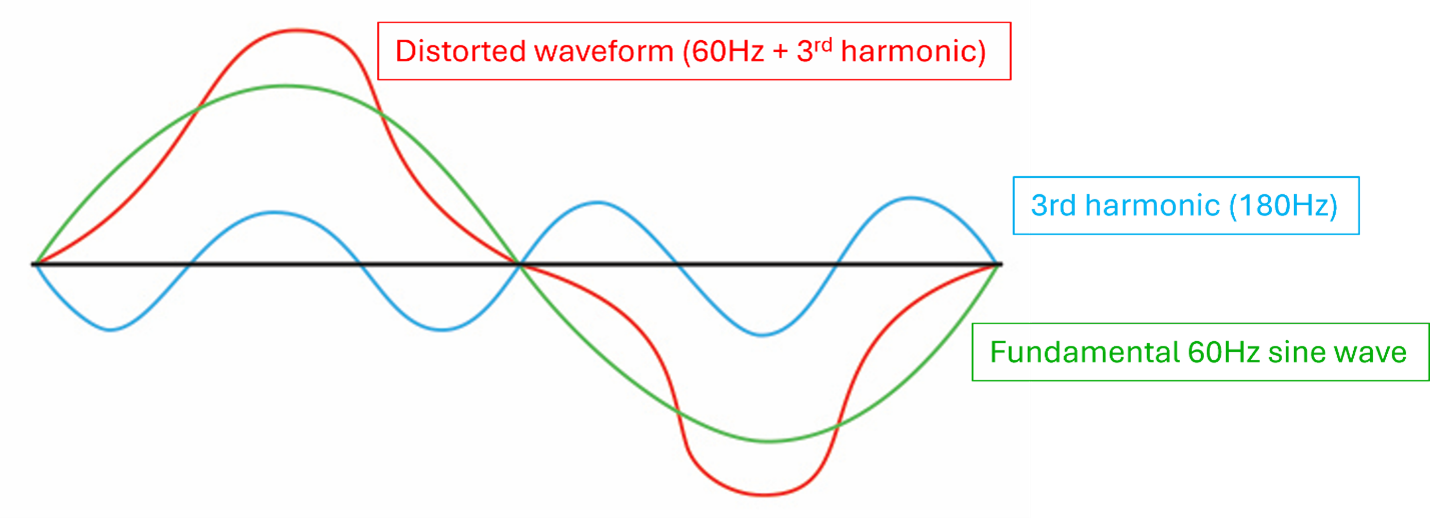What is Total Harmonic Distortion and should you be concerned about it?
Thursday, August 28, 2025
THD, Total Harmonic Distortion, is the measurement of the amount of distortion in a signal. This distortion is compared to an ideal sinusoidal waveform, Figure 1, having only one frequency component.

Figure 1: Ideal sinusoid
An engineer developing a power amplifier for a high-end sound system will require a very small amount of distortion, with the output faithfully reproducing the source as much as possible. Having a high level of signal distortion would be very noticeable and most likely be unacceptable above a 1% level.
Manufacturers producing electrical and electronic equipment also have to be concerned about THD. When AC-DC switchmode power supplies were first introduced, they began to replace linear power supplies, offering improved efficiency, lower weight and wider input ranges.
One serious disadvantage of this technology was the product’s non-linear current draw. This caused multiple harmonics on the AC, distorting its waveform (Figure 2).

Figure 2: Distorted waveform with multiple harmonics
To counter this, switchmode power supplies began to incorporate power factor correction (PFC) according to the 61000-3-2 standard. See this blog on our website.
By keeping the harmonics as low as possible will increase the power factor, lower the peak currents and increase efficiency.
If a third harmonic is present on the fundamental sine wave, both the AC power source and the load should be able to support any increased peak currents plus additional power losses in wiring and transformers.
For testing THD, the US standard IEEE 519-2022 is commonly used. A high quality programmable AC source that can provide a pure sine wave is one method. That same source can be used for additional testing on a number of international standards.
TDK-Lambda’s AC sources (figure 3) offer high power density with up to 3kVA in a 1U, and 9kVA three phase in 3U, while being exceptionally easy to use with a full color touch screen interface and intuitive navigation. The GENESYS™ AC offer AC only (GAC) and AC+DC (GAC-PRO) models to support a wide range of test needs.

Figure 3: TDK-Lambda 9kVA AC Programmable Power Source
https://www.us.lambda.tdk.com/products/programmable-power/genesys-ac.html





